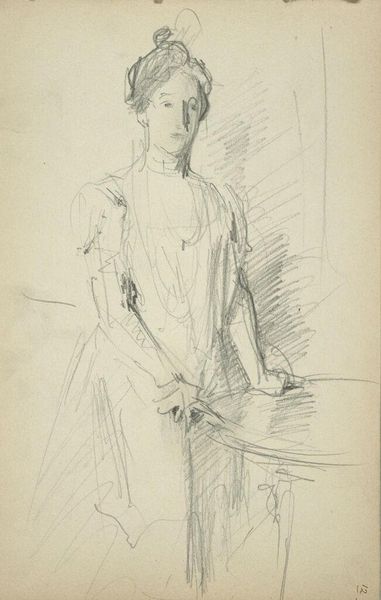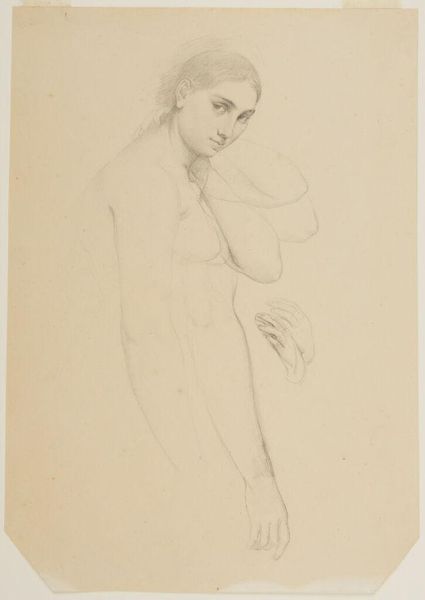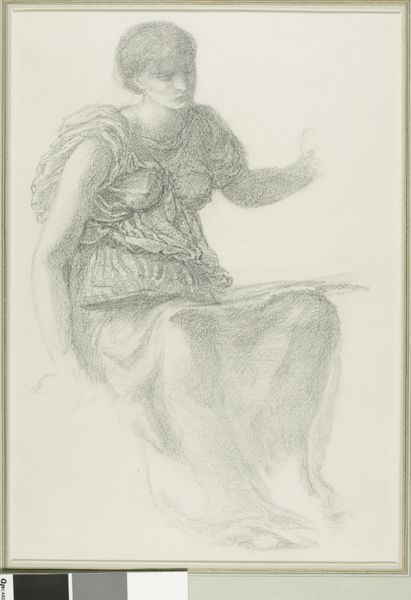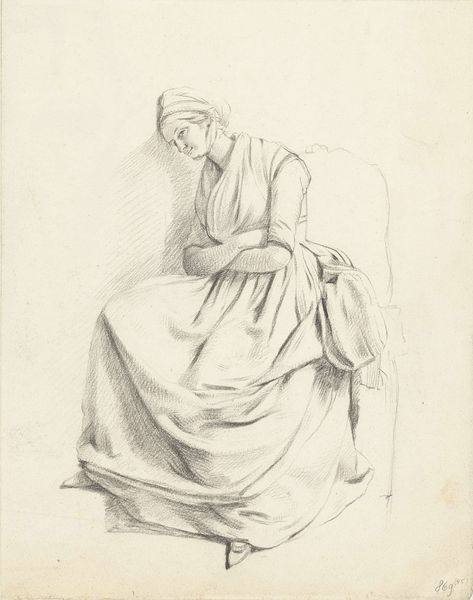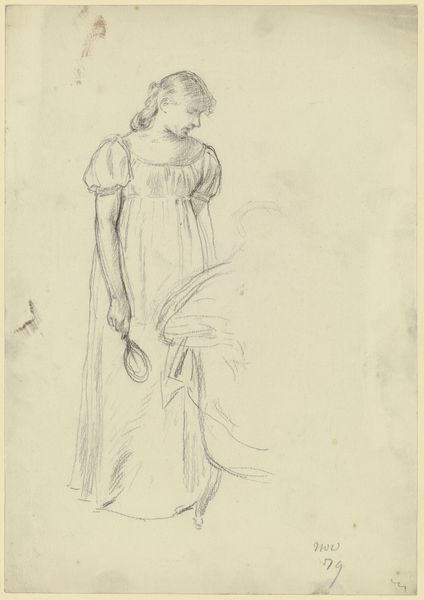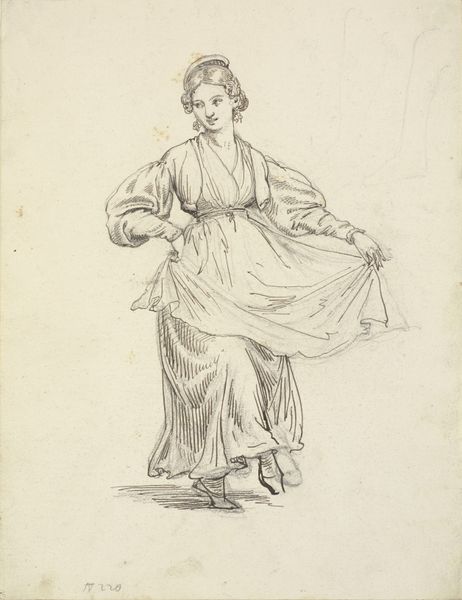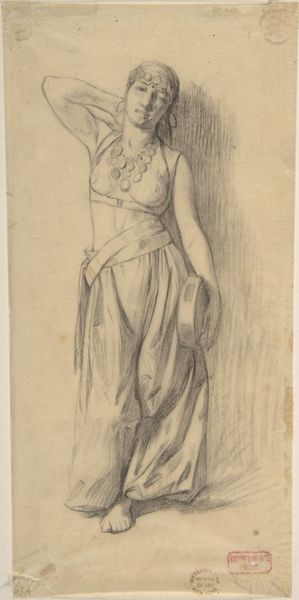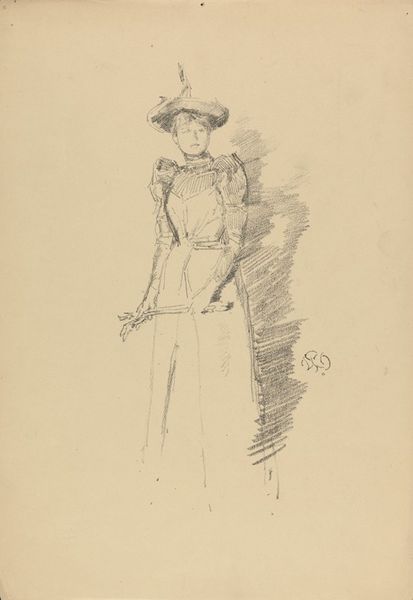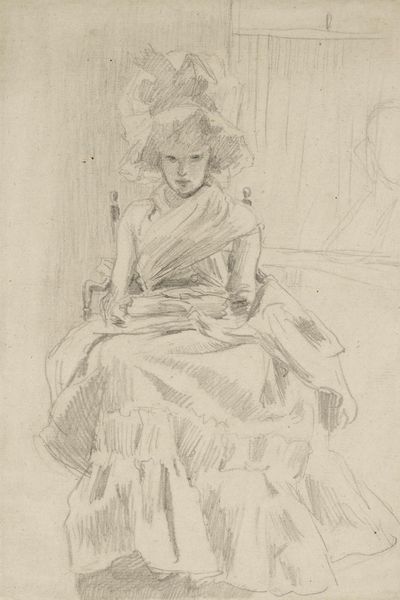
drawing, pencil
#
portrait
#
drawing
#
figuration
#
pencil drawing
#
romanticism
#
pencil
#
portrait drawing
#
history-painting
#
pre-raphaelites
Copyright: Public Domain: Artvee
Curator: This is Edward Burne-Jones’s pencil drawing "The Fates – Study of Drapery for Figure of Clotho." Part of his work leading up to a larger composition. Editor: I'm immediately struck by the ethereal quality of the lines. The delicate rendering gives it such a serene, almost melancholy feel. It's like gazing at a memory, insubstantial and fading. Curator: Exactly. The Pre-Raphaelites, including Burne-Jones, were deeply invested in reinterpreting classical and mythological themes through a lens that questioned Victorian society. He’s evoking a sense of historical and symbolic weight using Clotho. As one of the three Fates in Greek mythology, Clotho spins the thread of life, determining our destiny at birth, which would resonate with anxieties surrounding social determinism at the time. Editor: I see what you mean. Considering it as a study for drapery also grounds it. Look at how carefully he renders the folds. It speaks to a real, tangible process of crafting these mythic figures. He's thinking about gravity and weight in representing something allegorical. It's about the skill, the labor put into creating the illusion of these timeless figures. Curator: Right. His preparatory work has strong ties to debates concerning gender roles within Pre-Raphaelite circles, who saw depictions of women with agency in mythological contexts as a means to interrogate prevailing ideas around female domesticity. Editor: And the materiality is key – the pencil itself. Graphite, being extracted, processed, and then applied, connects this romantic scene to the very real work in factories and mines that characterized the Victorian era. You can't ignore that connection. Curator: It definitely anchors it in that period. It’s that interplay between the social fabric of Victorian England and Burne-Jones’ artistic license when illustrating those classic characters. The weight of history shaping representations of gender and power dynamics of today, maybe. Editor: So, ultimately, what began as a simple study tells a complex story of materials and their relation to both high art and broader societal concerns. Curator: Agreed. It prompts questions on women’s societal positions as arbiters of fate alongside the more structural processes dictating said fate in their present.
Comments
No comments
Be the first to comment and join the conversation on the ultimate creative platform.

